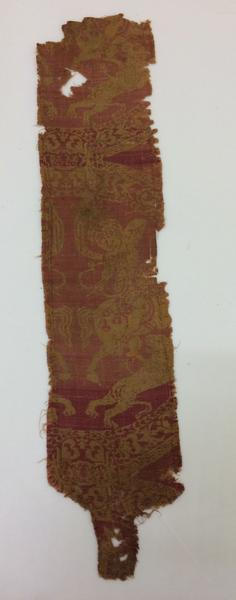
Try Amazon Audible Premium Plus and Get Up to Two Free Audiobooks
Egyptian or Arab Horse Archer on a Samite Textile,
Egypt, 6th-7th centuries,
Victoria and Albert Museum 2181A-1900



Textile Samite Fragment with Hunting Scene
Place of origin: Egypt (made)
Date: ca. AD500-700 (made)
Materials and Techniques: Woven silk
Museum number: 2181A-1900
2181A-1900: A strip of samite woven in yellow and pink silk. A thick border (26mm wide; floral icons) encircles a mounted huntsman with a bow, who is attacking a tiger (which appears to have an arrow in its side) at the horses feet. The warrior wears a cloak and the horse has a decorative harness. Above the main roundel is another showing the tiger. A floral circle sits at the join of the two roundels. Only one huntsman can be seen although the roundel has another which has been cut away. The piece is faded, with small holes. There are stitch holes on either side and along the centre of the piece. Similar to to 817-1903, 292-1889 and 2185(+A+B)-1900.
Samite (twill woven silk) was thought to originate from Persia under Sassanian rule (AD224-651). It was commonly decorated with pairs of animals and birds and set in pearled lotus roundels. It is often found in Western burials, within church possessions and along the Silk Road. Byzantine weaving workshops took on the samite technique to make it an essential weave of the period. It was a luxury textile of the Middle Ages brought to Europe when the Crusades opened up direct contact with the East. It was forbidden to the middle classes of France under the sumptuary rules c. 1470
Victoria and Albert Museum